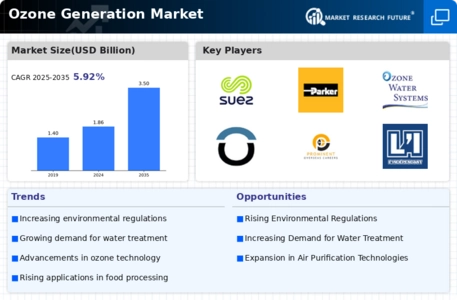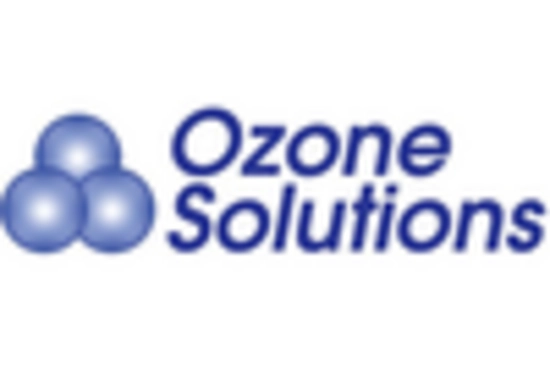Market Trends
Key Emerging Trends in the Ozone Generation Market
The economic landscape in developing countries across the Asia-Pacific region has witnessed a positive trajectory in recent years, particularly reflected in the steady increase in per capita income. Notable countries contributing to this economic upswing include China, India, Indonesia, Thailand, and the Philippines. This surge in per capita income has had a profound impact on the financial stability of households, fostering an environment of enhanced purchasing power and an improved standard of living.
China, as one of the major players in the Asia-Pacific region, has experienced remarkable economic growth over the past few decades. The country's per capita income has seen a substantial increase, reflecting the overall improvement in living standards for its vast population. The robust economic growth in China has not only elevated household incomes but has also positioned the country as a key player in the global economy.
Similarly, India, with its burgeoning population and expanding economy, has witnessed positive trends in per capita income. The stability in household incomes has contributed to an upward trajectory in the overall economic well-being of its citizens. As disposable incomes rise, individuals have experienced an improvement in their quality of life, leading to increased consumer spending and a shift towards a more affluent lifestyle.
Indonesia, a dynamic economy in Southeast Asia, has also seen a commendable rise in per capita income. The country's economic policies and strategic initiatives have played a pivotal role in fostering financial stability among its citizens. This has translated into an increased ability to spend on various goods and services, ultimately driving economic growth.
Thailand, known for its tourism industry and diverse economic sectors, has contributed to the overall economic prosperity in the Asia-Pacific region. The country's per capita income has witnessed positive growth, empowering individuals to participate more actively in the economy. This financial empowerment has translated into an improved standard of living and increased consumer confidence.
The Philippines, with its strategic location and growing economy, has experienced an upliftment in per capita income. The government's focus on economic development and poverty alleviation has positively influenced household incomes. As a result, Filipino citizens have seen an improvement in their economic conditions, leading to an increased ability to participate in the consumer market.
The collective impact of rising per capita incomes in these developing countries has been substantial. It has not only elevated the overall economic standing of the Asia-Pacific region but has also opened up avenues for increased consumer spending. The improved financial strength of households has led to a higher purchasing power, enabling individuals to engage in diverse economic activities.
This economic transformation is not merely about numerical figures but encompasses a broader spectrum of societal improvements. As households witness an increase in per capita income, there is a corresponding enhancement in the quality of life. People are afforded the opportunity to access better education, healthcare, and overall well-being. The positive correlation between rising per capita income and improved lifestyles signifies a holistic economic development in the Asia-Pacific region.
Looking ahead, the continued focus on economic policies, sustainable development, and poverty reduction in these developing countries is expected to further bolster per capita income. As financial stability becomes more pervasive, the Asia-Pacific region is likely to continue on its trajectory of economic growth, fostering a brighter future for its citizens. The convergence of enhanced per capita income and improved living standards is a testament to the resilience and dynamism of the developing economies in the Asia-Pacific region.

















Leave a Comment